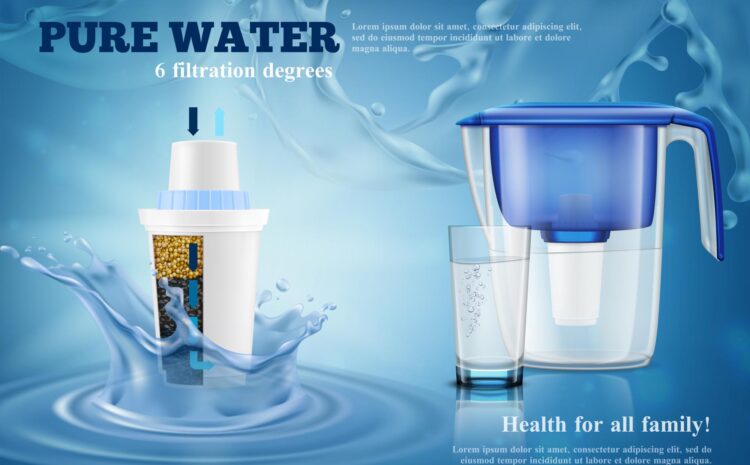
What Are The 4 Steps Of Water Treatment (2023)
At the global level Steps Of Water Treatment, one of the challenges is treating as much wastewater as possible. In a 2017 UN report entitled Wastewater – The Untapped Resource, wastewater is identified as a potential source of freshwater and raw materials for the planet.
According to the source, sewage or waste water is water whose quality has been compromised by human intervention. It can be classified as domestic, industrial, or urban waste water.
WWTPs collect and treat wastewater from populated areas or industrial sectors to remove pollutants. Through this process, the resource is returned to the water cycle, either by discharging it into watercourses or reusing it for agricultural purposes.
What are the processes that take place in wastewater treatment plants?
In WWTPs, pollutants are removed through physical, chemical, and biological processes. Preliminary, primary, secondary, and tertiary stages are usually used in these processes.
Furthermore, WWTPs also process by-products derived from the various treatment processes. Sludge treatment and management, for example, are significant due to their complexity and importance.
1. Treatment in the preliminary stage
The first stage of waste water treatment is preliminary treatment, which prepares water for purification in the following phases. The process involves removing any objects that might damage the plant or the equipment that will be used for purification.
Usually, roughing is done first. By using different thickness screens and sieves, large and medium-sized solid waste is separated. Using desanders and degreasers, grease and sand are removed.
2. Treatment as a primary concern
A part of the suspended solids will be removed at this stage. Decanter centrifuges are used to separate these particles by retaining water for one to two hours. It also homogenizes the flow and removes organic matter associated with suspended solids.
The sedimentation of solids and removal of phosphorus can also be improved by adding chemicals such as coagulants and flocculants. A base or acidic agent may be used to neutralize the pH of water.
3. Treatment as a secondary measure
Organic matter and nutrients such as nitrogen and phosphorus are removed from the water using this process.
Bacteria and microorganisms are used in this secondary treatment, which is mainly biological, to degrade and remove organic matter and nutrients. As a result of activated sludge, water is left in a tank for several days under different oxygen conditions according to the amount of removal required (aerobic, anoxic and anaerobic). By consuming organic matter and nutrients in the water, bacteria in the tank or reactor remove those from the water and incorporate them into their bodies.

After the biological process, there is usually a second or secondary settling process. Biological sludge is a mixture of water and solids that is produced by the bacteria that grew in the previous process. A decanter’s lower portion is used to extract or flush out the mixture, and the upper part is used to filter out purified water without most of the bacteria and solids, giving rise to clarified water.
Water treatment usually ends at this point in wastewater treatment plants, when the treated water meets the discharge requirements and further reuse or use of the water is not required.
4. The tertiary level of treatment
The aim of tertiary or chemical treatment is to increase the final quality of the water so that it can be returned to the environment (sea, rivers, lakes, and other Steps Of Water Treatment hydrographic basins) and, in some cases, used for human consumption. Pathogenic agents, such as fecal bacteria, are eliminated through a series of processes.
As a result of the previous stages, microscopic living organisms have been generated, which can be reduced with the use of sand beds and disinfection (usually chlorine or UV light).
As a result of wastewater treatment, certain types of waste are produced. During the primary and secondary decanting processes, there is a large amount of sludge generated.
To optimize downstream processes, the sludge is thickened first in order to reduce the amount of water to be treated. A closed tank called a digester is used to digest this mixed sludge in order to stabilize bacteria growth and remove them. Afterwards, the water is dewatered with centrifuges, usually decanter centrifuges, in order to reduce its volume. It must be managed in a way that minimizes the environmental impact when this sludge complies with requirements for dryness, heavy metals, nutrients, and pathogens. It is commonly used as fertilizer in Spanish agriculture.
Addressing current challenges with wastewater
To achieve Sustainable Development Goal 6 of the United Nations’ 2030 Agenda, more people should have access to safe drinking water and sanitation, which will lead to more wastewater discharges. The treatment of this resource must be more efficient, affordable, and sustainable to make better use of it.
Globally, some progress is being made in this area. The number of wastewater treatment facilities in Latin America has almost doubled over the past 20 years, according to UNESCO data. Many WWTPs in Spain are using Idrica’s GoAigua solution to efficiently recycle end water for agricultural purposes. Wastewater treatment is another example of how technology contributes to environmental sustainability.
Steps Of Water Treatment
It is still recommended to continue to reduce this amount of sewage discharged without being treated, since the percentage of sewage discharged without being treated is still high. Generalizing the reuse of treated wastewater will be a decisive move. To optimize Steps Of Water Treatment wastewater treatment plants, sewage networks, and storm drainage, digital transformation is essential. Among other things, GoAigua Wastewater solutions improve processes, ensure water quality, and reduce carbon footprints.